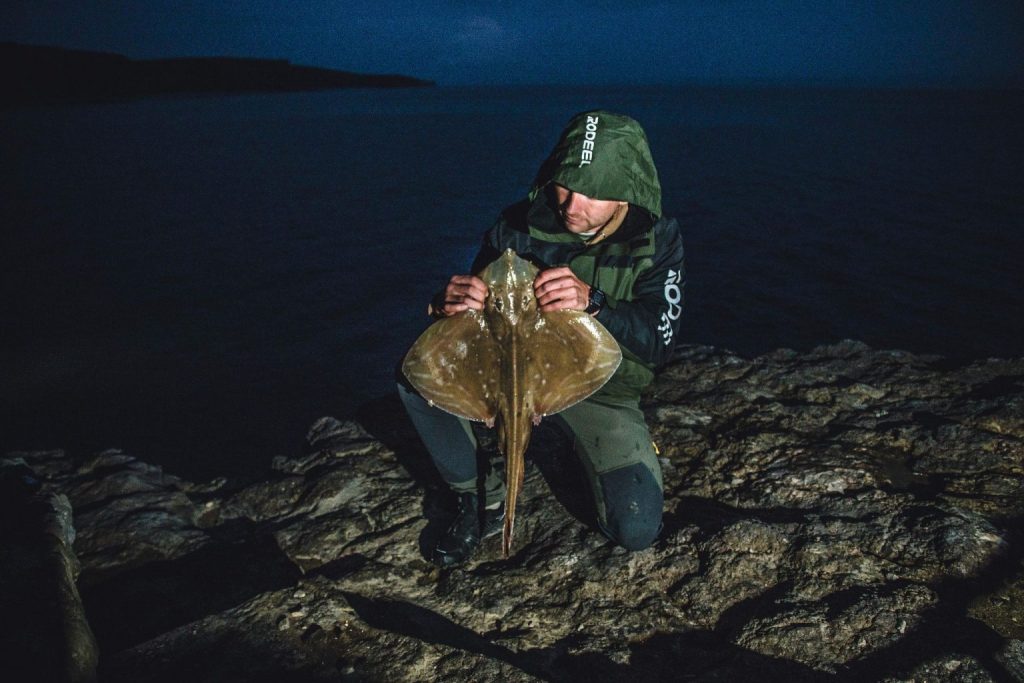An anglers conservation guide to UK sharks & rays
Shark fishing in the UK has a pretty grim history, with very low respect towards these creatures. Today, pretty much everyone is thankfully catch and release for these animals, most of which are in trouble. The relationship between angling and shark and ray fishing is not always an embarrassment for anglers, though. It was angling that managed to help save the Flapper Skate from extiction a few years back, and get the tope their protected status in Scotland.
In other words, some of these species are only around to catch because anglers pushed to have them protected from overfishing. This guide will cover how to catch some of these species, along with tips for fish care.
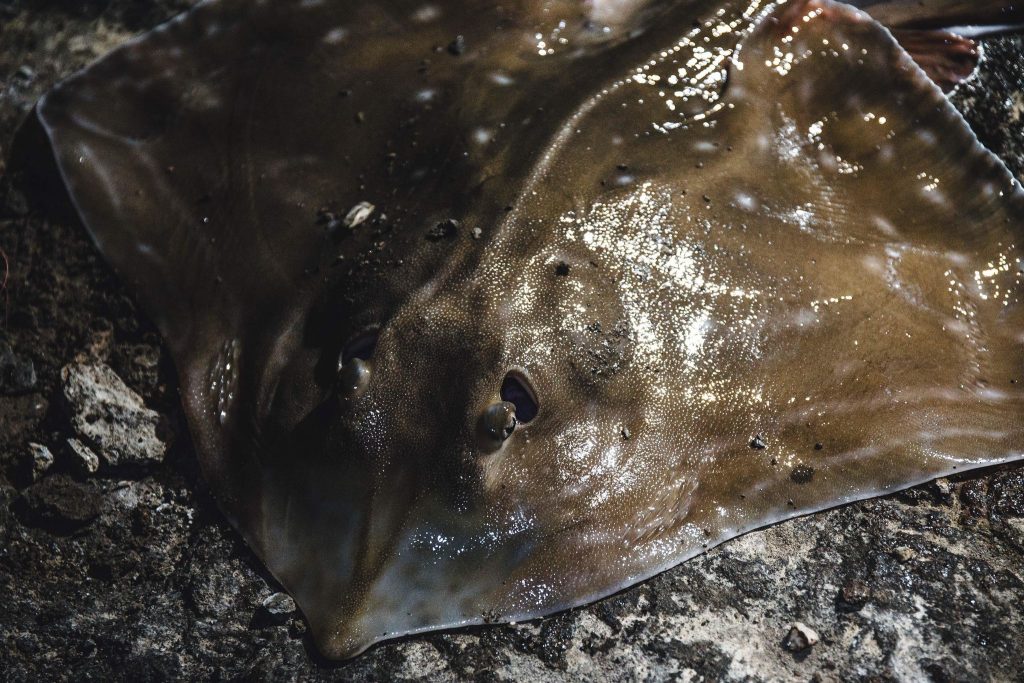
Photo Credit to Matilda Björklund
Skate and Ray feed largely on crustaceans, worms and small bottom feeding fish including flat fish dragonette and sand eels. You may be surprised to hear that skates and rays don’t exclusively hunt on the bottom and hunt oily fish in considerable numbers. It is thought that some species of skate and ray may feed more in the mid-section of the water column and may use the bottom as a place to rest rather than as their primary hunting ground.
Because skates and rays have eyes on the top of their heads that look out across the seabed rather and mouths on their underside, these fish can’t see what they’re eating! Bait presentation may therefore be less important than it is for other species, but bear in mind that like the sharks to which ray and skate are closely related, these fish have an incredible sense of smell.
The eggs of rays are similar to the mermaids purses that dogfish produce, but are more square in shape, which is fitting! The main difference between ray and skate is that skate tend to have white undersides and and longer snouts.
Thornback Ray
You may have seen a ray hunt on David Attenborough, you’ll know that they have the ability to use their wings to pin fish down and draw them towards their smallish mouths for processing. It’s a disturbing hunting style, and for anglers, it means that you should wait until a while after getting the first bite for the fish to properly take the hook. It’s quite a sight to behold. Thornback ray are common in the UK and often caught from deep estuaries with beach casters on the bottom. Much like dogfish to which these fish are surprisingly closely related (both have cartilage instead of bone), these fish can hardly see a thing down in the murky depths. Instead, they rely on a mysterious combination of electromagnetism and vibration to locate their prey.
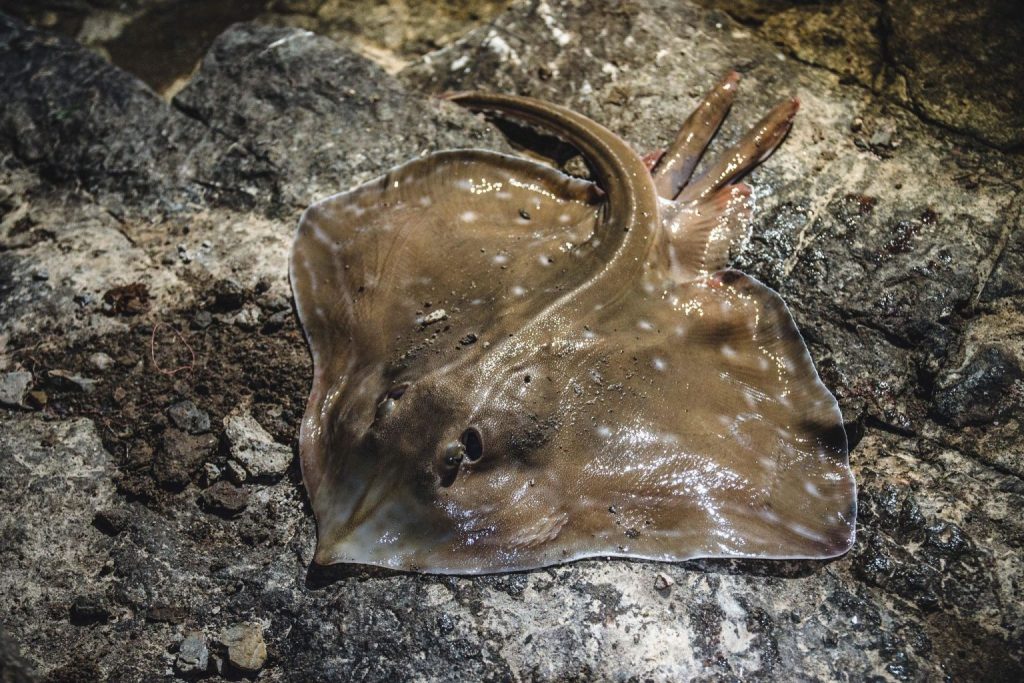
Photo Credit to Matilda Björklund
Ray Fishing Season UK
Thornback ray are caught from early spring through to early Autumn throughout the UK.
Best Bait for Thornback Ray
Oily fish are effective baits for ray, as are peeler crab. Ray feed on sandeels when they are in estuaries, and I’m told by a reliable source sandeel are also a good bait for ray.
Blue shark reach over three and a half metres in length, and unlike some of the other shark species that are common in the UK, these one’s aren’t bottom feeders that mind their own business. Blue shark can be caught directly from the surface on very heavy weight fly fishing gear, but are more commonly targeted with large floats, with the use of chum (mushed up fish) to create a scent in the water to attract them.
This article provides an overview of the methods used to catch these fish, along with how to return them unharmed to grace British waters for years to come.

How to catch & release blue shark carefully
There are three important things we can do to take care of these sharks.
1. Never take pick them up for a photo
The sharks are not built for withstanding gravity, and you can damage their internal organs if you pick them up.
Secondly, you need to be highly proficient in unhooking these fish for a very quick release with the fish never removed from the water. Finally, you can use size 10/0 circle hooks to make sure you don’t deep hook these marvellous fish.
This means you really need to know your way around a T-bone disgorger and have the competence to unhook these fish before actually hooking one.
2. Most boat anglers target blue shark with shark floats on a drift of several miles
Blue shark rarely come in shore and are exclusively targeted miles offshore, often with a drift of up to ten miles to locate the fish – or rather, for the fish to locate you… The boat drifts, leaving a trail of scent from the chum, and the shark follow.
Often, these floats are balloons which pop with the pressure once the shark has taken the bait. Biodegradable balloons or regular shark floats are better to minimise plastic pollution.
3. Catching blue shark requires the use of chum or ‘rubby-dubby’
Once the Blue Sharks pick up on the scent of blood in the water, they will travel for miles to get to the location and it’s possible to create your own little area of shark infestation to fish. Often these fish are targeted on a long drift, following the current in the same direction that the slick from your chum is going. Essentially, you are following the current as it carries the scent of your chum or ‘rubby-dubby’ along, and the blue sharks are following the scent from the other direction towards you. Should you be so lucky as the meet the fish in the middle, which usually takes at least 45 minutes, you’re in for an incredible fight from a stunningly beautiful fish.
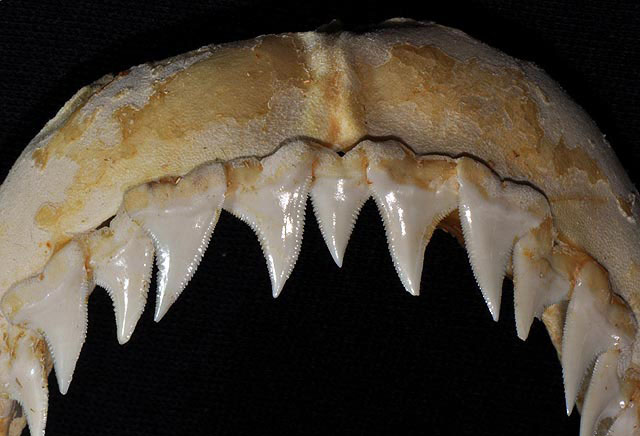
Blue shark have long streamlined bodies, and move with power and grace. They are a brilliant blue colour and have very small razor sharp teeth and powerful jaws. Their skin is rough and to protect the sensitive internal organs of the fish, they are best released along the side of the boat or at least supported all along the body when lifted so that the stomach doesn’t sag and become damaged. Fish are then sometimes tagged and should always be released to aid in conservation of this magnificent and endangered species.
4. Blue shark are most common a few miles off the south west coast of the UK
These sharks are common off the South West coast and in some areas of Ireland and are only caught miles offshore.
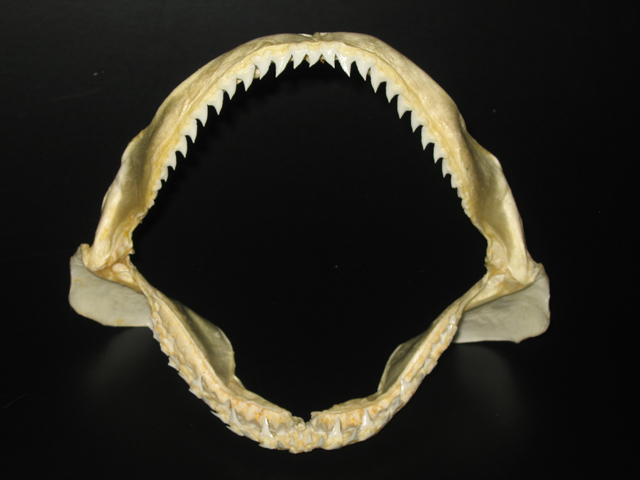
5. The blue shark season runs between May and October
Blue shark can be caught in the UK between May and October all around the British coastline.
Blue shark are normally found in sub-tropical waters but come to Europe in summertime. The sharks are most common in the south of Britain.
6. The best blue shark rods are 30-80lb, for a quick landing
Blue Shark are very powerful and fairly heavy gear is required. In his book on sea fishing in the UK, Bailey recommends the use of a 30-80lb class rod. A small number of anglers actually target Blue Shark on the fly with heavy fly rods, and are able to land fish this way, but this approach requires a lot of skill and may tire out the fish unnecessarily. It must be incredible to catch a Blue Shark off the surface on a fly, though.
7. The best hook size for blue shark is size 10/0
Hooks are typically about size 10/0 and wire traces are used to prevent instant snap-offs from the sharks teeth. Monofilament won’t even survive contact with their rough skin, let alone their teeth. Oily fish are the best bait for Blue Shark, with mackerel, herring or garfish being good baits. Scent is everything when shark fishing, and oil is easily detectable from miles away by these fish. It’s important to strike firmly to set the hook, as Blue Shark have mouths about as tough as you’d expect from a shark.
Do blue shark bite or attack people?
There are no accounts of Blue Shark biting people in the media, but FISHMAG happens to know that this is partially because the people that get bitten are divers that do not wish to give sharks a bad rep, so don’t do media interviews. Blue shark bites are extraordinarily rare but they are capable of doing significant damage. The only case we have heard of involved an underwater photography group that was disturbing the fish by having too many people in the water at once, all splashing around. When diving with these fish it’s important to be relaxed and not go in large groups. To be clear, these are not dangerous sharks. But yes, they have attacked at least one person – the lady that I heard about from a dive instructor.
Spurdog
Like the lesser spotted dogfish, this fish has the word ‘dog’ in its name because of its tendency to hunt and scavenge in packs. This species has a powerful, slender body and will hunt in the mid-water as well as the bottom. It’s usually caught offshore from boats, but can be caught from shore at sizes up to 15lb and 4ft long – which would make it a monster spurdog. Spurdog favour deep water and clean ground.
Should you mistake this fish for a smoothhound, you may be punished with a deep slice from the sharp spines which sit on both dorsal fins. These spines are the easiest ID method, and you don’t want to tangle with them.
Spurdog are very common in Scotland and are sometimes caught in enormous numbers, due to their tendency to shoal with large numbers of same-sex fish. They are a popular sport fish in the Scottish sea lochs and are also caught in decent numbers from the South coast of Wales.
The best bait for Spurdog is an oily fish, like a mackerel, herring or garfish.

